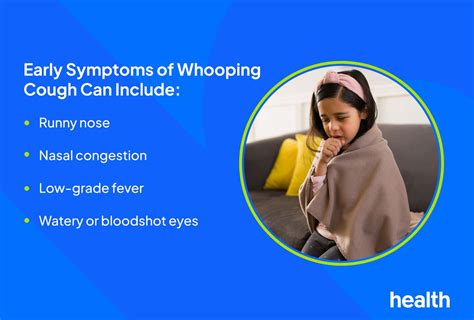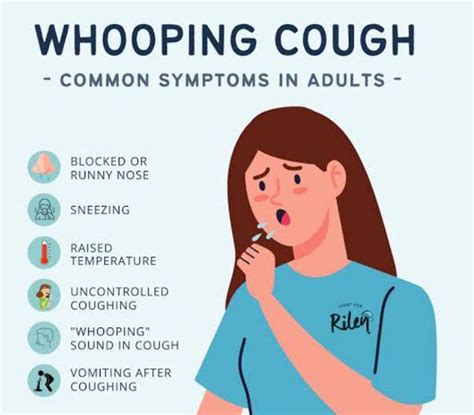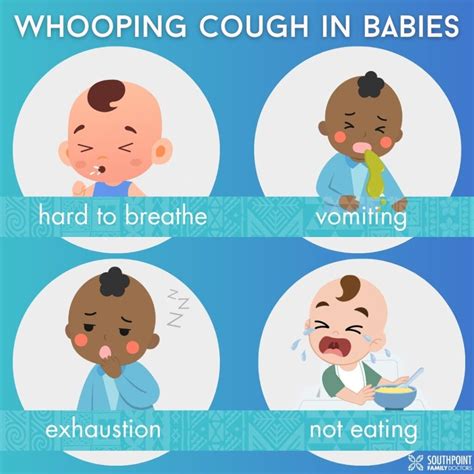Intro
Discover what is whooping cough, its symptoms, and treatment. Learn about pertussis causes, vaccination, and prevention methods to protect against this contagious respiratory disease.
Whooping cough, also known as pertussis, is a highly contagious respiratory illness caused by the bacterium Bordetella pertussis. It is characterized by severe coughing fits, often accompanied by a distinctive "whoop" sound, which can be debilitating and even life-threatening, especially for young children and infants. The disease is spread through respiratory droplets, such as those produced by coughing or sneezing, and can be prevented through vaccination. Despite the availability of effective vaccines, whooping cough remains a significant public health concern, with periodic outbreaks occurring worldwide.
The importance of understanding whooping cough cannot be overstated, as it is a significant cause of morbidity and mortality, particularly among vulnerable populations. According to the World Health Organization (WHO), there were over 24 million reported cases of pertussis worldwide in 2019, resulting in approximately 160,000 deaths. In the United States alone, the Centers for Disease Control and Prevention (CDC) reported over 18,000 cases of pertussis in 2020, with the majority of cases occurring among children under the age of 10.
The impact of whooping cough extends beyond the individual, as it can also have significant socioeconomic and psychological effects on families and communities. The disease can lead to missed work or school days, increased healthcare costs, and emotional distress, particularly for parents who are concerned about the health and well-being of their children. Furthermore, the spread of whooping cough can be facilitated by social and environmental factors, such as poverty, poor living conditions, and limited access to healthcare services.
What Causes Whooping Cough

Transmission of Whooping Cough
The transmission of whooping cough is facilitated by several factors, including the highly contagious nature of the bacterium, the ease of spread through respiratory droplets, and the lack of immunity among vulnerable populations. The disease can be spread through various routes, including:- Respiratory droplets: The bacterium can be spread through coughing or sneezing, which can release respiratory droplets into the air.
- Close contact: The disease can be spread through close contact with an infected person, such as touching or sharing food and drinks.
- Contaminated surfaces: The bacterium can survive on contaminated surfaces for several days, and can be spread through contact with these surfaces.
Symptoms of Whooping Cough

- Stage 1: The catarrhal stage, which is characterized by mild symptoms such as coughing, sneezing, and runny nose.
- Stage 2: The paroxysmal stage, which is characterized by severe coughing fits, often accompanied by a distinctive "whoop" sound.
- Stage 3: The convalescent stage, which is characterized by a gradual recovery from the disease.
Complications of Whooping Cough
Whooping cough can lead to several complications, particularly among young children and infants. Some of the possible complications include:- Pneumonia: Whooping cough can lead to pneumonia, which is a serious and potentially life-threatening complication.
- Apnea: The disease can cause apnea, which is a pause in breathing that can be life-threatening.
- Seizures: Whooping cough can cause seizures, particularly among young children and infants.
- Brain damage: The disease can cause brain damage, particularly among young children and infants.
Diagnosis of Whooping Cough

- Polymerase chain reaction (PCR): This test can detect the genetic material of the bacterium.
- Culture: This test can detect the presence of the bacterium in respiratory secretions.
- Serology: This test can detect the presence of antibodies against the bacterium.
Treatment of Whooping Cough
The treatment of whooping cough typically involves antibiotics, such as azithromycin or clarithromycin, which can help to reduce the severity and duration of the disease. The treatment can also include supportive care, such as:- Rest: Patients with whooping cough should get plenty of rest to help their bodies recover from the disease.
- Hydration: Patients should drink plenty of fluids to help loosen mucus and prevent dehydration.
- Cough suppressants: Cough suppressants, such as dextromethorphan, can help to relieve coughing symptoms.
Prevention of Whooping Cough

- Good hygiene: Practicing good hygiene, such as washing hands regularly and avoiding close contact with infected individuals, can help to prevent the spread of the disease.
- Avoiding close contact: Avoiding close contact with infected individuals, such as not sharing food or drinks, can help to prevent the spread of the disease.
Vaccination Against Whooping Cough
Vaccination against whooping cough is the most effective way to prevent the disease. The CDC recommends that children receive a series of pertussis vaccinations, starting at 2 months of age, and that adults receive a booster dose every 10 years. The vaccines available include:- DTaP: This vaccine protects against diphtheria, tetanus, and pertussis.
- Tdap: This vaccine protects against tetanus, diphtheria, and pertussis.
- DT: This vaccine protects against diphtheria and tetanus.
What is the incubation period of whooping cough?
+The incubation period of whooping cough is typically between 7-10 days, but can range from 4-21 days.
How is whooping cough diagnosed?
+The diagnosis of whooping cough is typically based on the clinical presentation of the disease, which includes the characteristic coughing fits and distinctive "whoop" sound. The diagnosis can be confirmed through laboratory tests, such as PCR, culture, or serology.
Can whooping cough be prevented?
+Yes, whooping cough can be prevented through vaccination, which can provide immunity against the disease. Other preventive measures include good hygiene, avoiding close contact with infected individuals, and practicing good respiratory etiquette.
We hope this article has provided you with a comprehensive understanding of whooping cough, its causes, symptoms, diagnosis, treatment, and prevention. If you have any further questions or concerns, please do not hesitate to comment below. Sharing this article with friends and family can also help to raise awareness about the importance of vaccination and prevention against whooping cough. By working together, we can reduce the incidence of this debilitating disease and protect vulnerable populations from its devastating effects.
